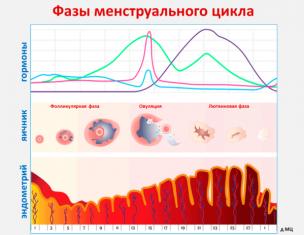Among the many methods that detect the presence of extra pounds in a person, the most popular is the calculation of body mass index. But scientists and doctors, examining the state of health, often consider such an indicator as waist circumference. This is because BMI does not indicate the distribution of body fat. But it is this factor that affects the risk of developing personal diseases.
How to measure waist circumference correctly: WHO instructions
According to the protocol of the World Health Organization (WHO), waist circumference is measured in the area between the lower edge of the lowest rib and the upper point of the pelvic bone - the iliac crest. For measurements, a regular centimeter tape is required. When girth "centimeter" should create a pressure that is equivalent to 100 grams. With the help of the same tool, the circumference of the hips is also determined - by wrapping the tape around the widest part of the buttocks.
An error in measuring the waist is the fixation of a centimeter tape at the level of the navel. Numerous studies have shown that this method gives not entirely correct results: the waist can turn out to be thinner than it really is.

Measuring the circumferences of both parts of the body requires the correct position of the person. You need to remove excess clothing, stand up straight, put your feet together, spread your arms to the sides. Breathing should be calm. All measurements are recorded on exhalation and repeated twice. If the difference in measurements is one centimeter, then the average results are taken.
Waist circumference norms for men and women
With a normal body weight, the waist circumference for men should be less than 94 cm, and for women less than 80 cm.
Overweight is indicated by a OT measuring more than 94 cm and less than 101.9 cm in men, and from 80 to 87.9 cm in women.
A sign of abdominal obesity is a waist circumference of more than 102 cm in men and more than 88 cm in women.
It should be noted that with age there is an increase in waist circumference. Moreover, it depends on the height of a person: the higher the person, the more waist growth he has. However, this phenomenon is observed up to 85 years. In people aged 85 to 89 years, the average waist circumference decreases.
Waist to hip ratio: an indicator of attractiveness and health
Waist-to-hip ratio refers to the ratio of the circumference of the waist to the circumference of the hips. This indicator is quite popular in the West, where scientists have done a lot of research trying to figure out how it affects a person's attractiveness and overall health. In English, it is abbreviated WHR (waist-to-hip ratio), in Russian - STB.

The ratio of waist and hips allows not only to establish how ideal the figure of a man or woman is, but also to predict the state of health for the future. Scientific research shows that women with an apple-shaped body type (that is, when the waist is wider than the hips) are more at risk of developing health problems than those with a pear-shaped body (hips are wider than the waist). This ratio is also used to determine central obesity, which contributes to the emergence of other more serious diseases.
So, the following ratios are considered normal:
Relationships that make women attractive
Even in ancient times, ideal women were represented with TBS, fluctuating in the range of 0.6-0.7. In other words, the wider a woman's hips were in relation to her waist, the more beautiful she was considered. Most likely, such preferences of the representatives of the stronger sex are explained by their subconscious understanding that the chosen one with such forms is more prone to procreation.

Modern research has shown that today the waist-to-hip ratio continues to be an important parameter of female attractiveness for men. Thus, women with HBS equal to 0.7 are rated by the stronger sex from Indo-European cultures as more attractive. Tastes may vary depending on the ethnicity of men. In this case, the ideal waist-to-hip ratio for women ranges from 0.6 (in South America, parts of Africa, China) to 0.8 (in Tanzania and Cameroon).
Why should you watch your waist size?
Recall that if the waist circumference in men is more than 102 cm, and in women more than 88 cm, we have a picture of abdominal obesity. Meanwhile, scientists have found that this particular type of obesity is one of the main components of the metabolic syndrome. Abdominal or central obesity leads to the development of coronary heart disease, as well as arterial hypertension.

In addition, painful fullness of this type is often accompanied by the development of cardiovascular diseases and type 2 diabetes mellitus. Abdominal fat is an environment where various metabolic processes are actively taking place. This is due to the high density in the accumulation of receptors for catecholamines, sex steroids, growth hormone, thyroid hormones and a small number of receptors for insulin.
The low activity of insulin in visceral fat leads to an increased production of components such as free fatty acids, which entails the development of atherogenesis (a constant process of vascular damage that worsens from time to time). That is why the accumulation of excessive amounts of abdominal fat becomes a risk factor for the occurrence of diseases of the cardiovascular system, diabetes and a number of other diseases.
Nevertheless, a decrease in body weight even by 5-10% or a decrease in waist circumference by at least 4 cm with a long-term retention of the achieved results can lead to an improvement in carbohydrate and fat metabolism and, as a result, a decrease in blood pressure.









